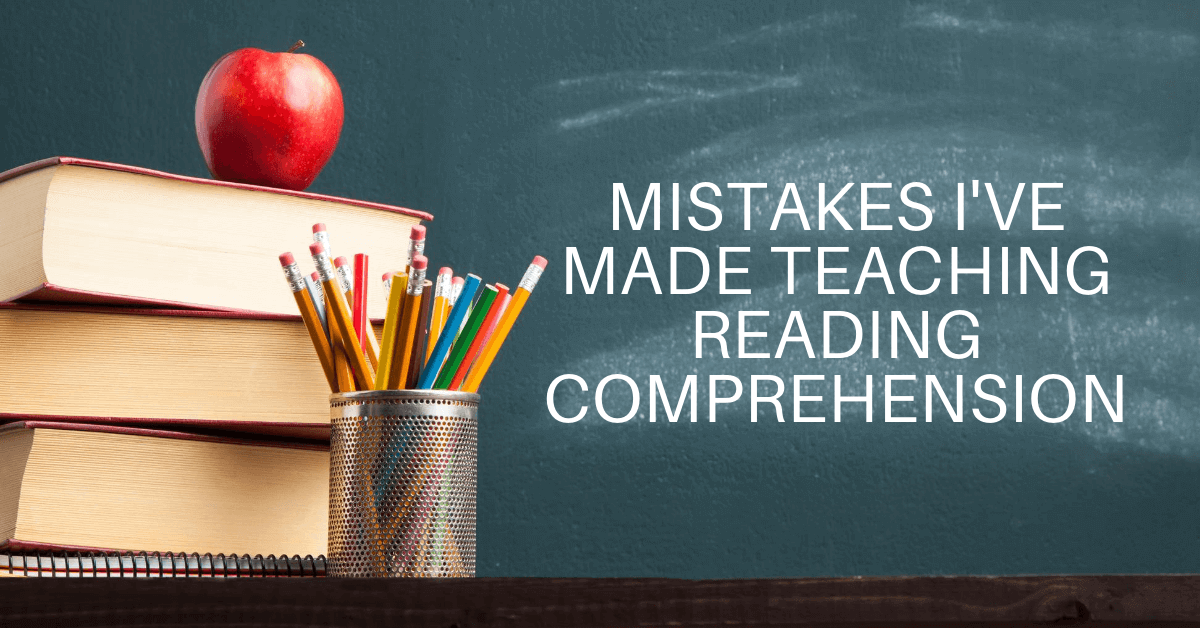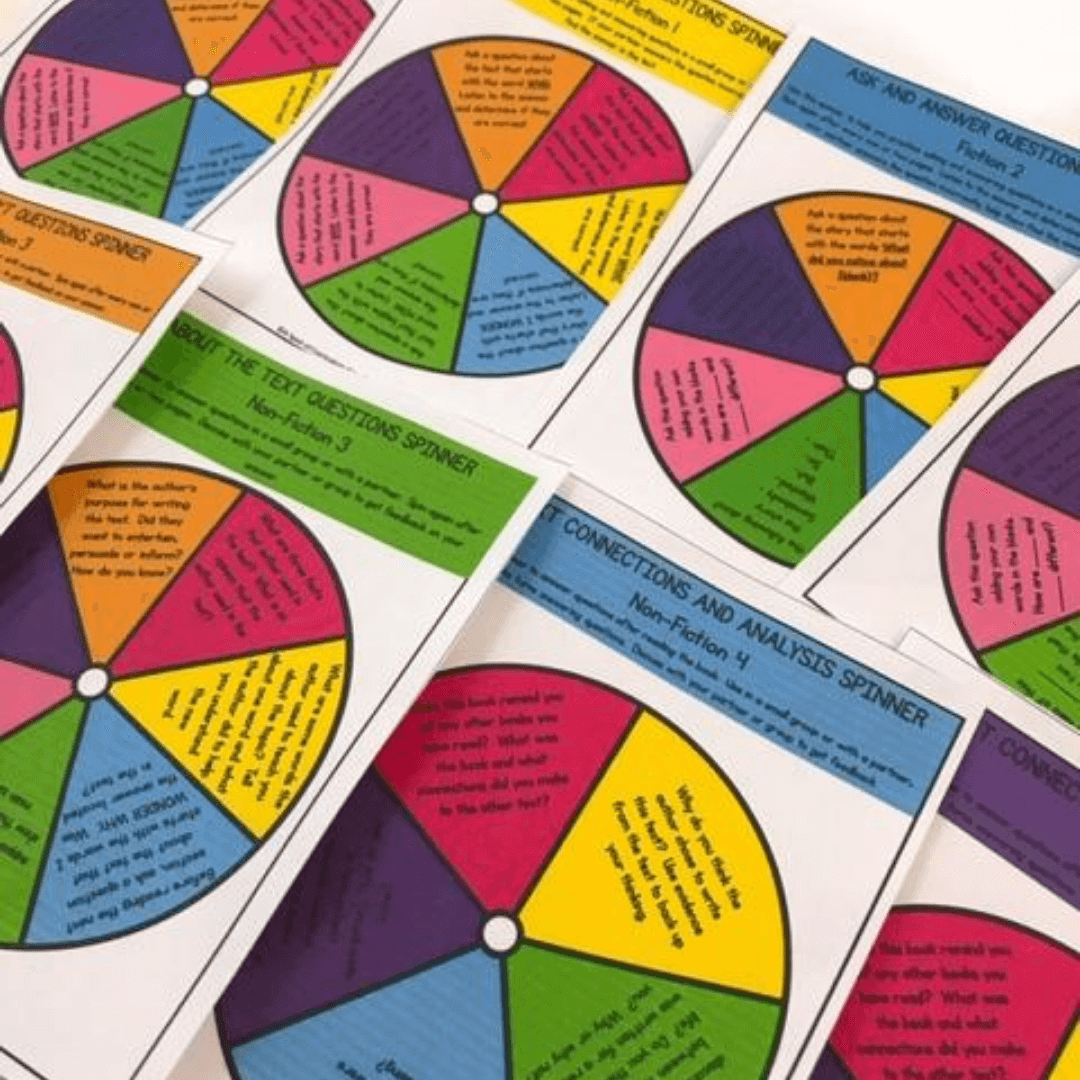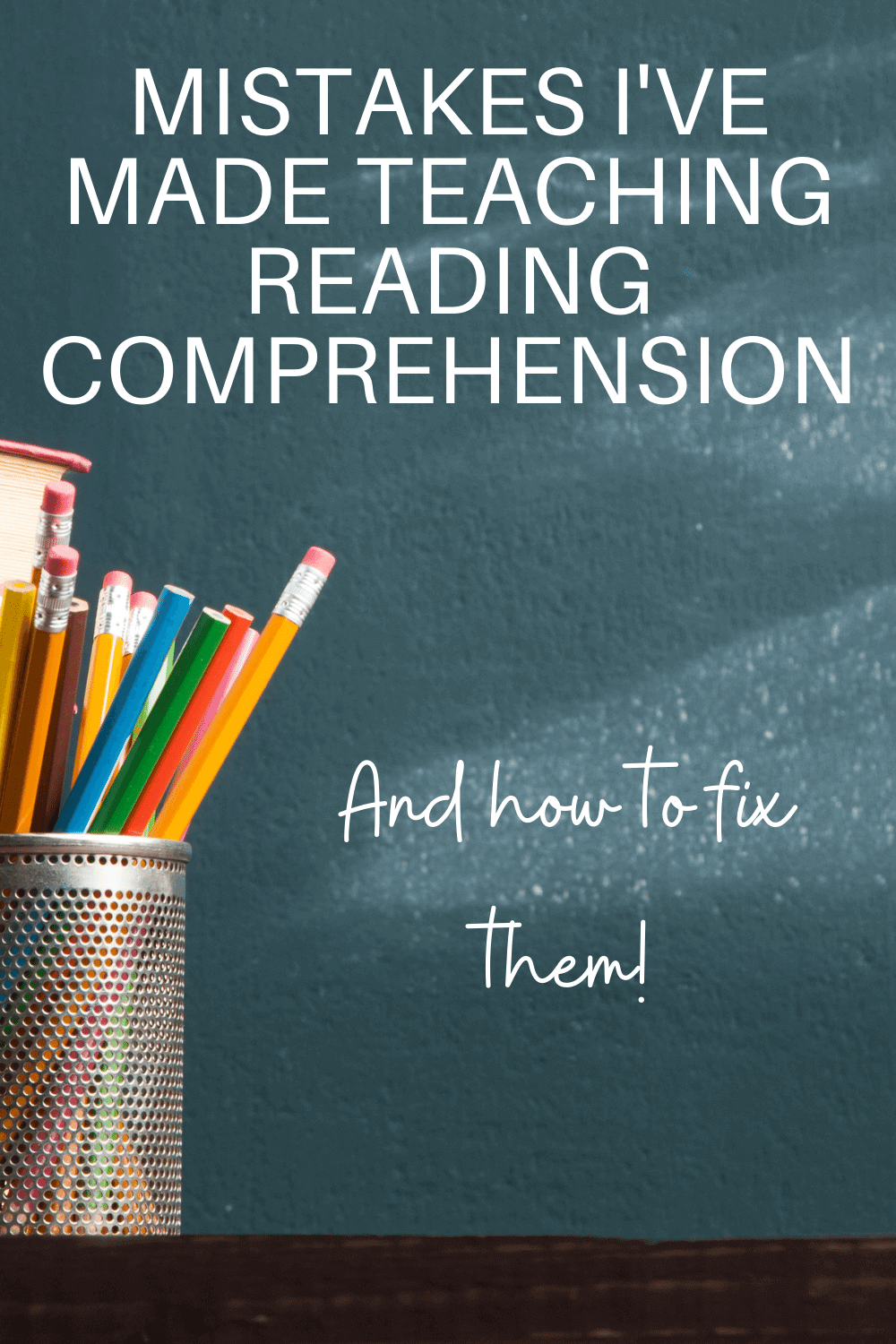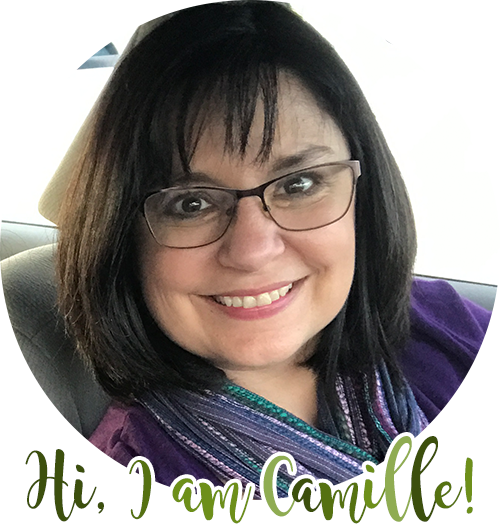Even when I tried my best, I've made mistakes teaching reading comprehension. Even when I thought I was doing the right type of teaching, I made even more mistakes. I have always tried to own them, so I can do better the next time. This post is to save you from making the same mistakes I have.

#1 I Asked Too Many Questions
One big mistake I made teaching reading comprehension was assessing instead of teaching. When I first started teaching, I thought the way you taught reading comprehension was to ask a bunch of questions about the story so I could tell if students really understood the story. While this was a good assessment, I need to (gasp) actually teach some strategies.
#2 I Didn't Share My Thinking
We know that your students read your mind, right? No, they really cannot see the reading processes that are going on inside your head. One of my favorite books on teaching reading is Kylene Beers' book When Students Can't Read, What Teachers Can Do. You can find this book HERE.
In one section she tells about three high school students reading a really complex poem. Two are proficient readers and one is not. When asked how they read the poem, the two proficient readers told all the strategies they used. They slowed down, started over, read more slowly, used information in the footnotes, tried to connect small ideas and vocabulary to other parts of the poem. The less proficient reader was dumbfounded. “All you said to do was read, right?”, she asked. Then she asked, “How did they know to do all that?” This reader never understood the process good readers use to make sense of hard texts. Make sure you share your thinking with your kids.
The best way to do this is a technique called Think Alouds. The teacher pauses as he or she reads so share their thinking. You can model questioning, rereading, figuring out an inference, etc. It is powerful because kids do not know what we are thinking unless we tell them. Read more about modeling during a read-aloud here.
#3 I Distracted My Students From Reading Comprehension
What would your students say is the most important part of reading? Ask them. If they don't say understanding or enjoying the story, then there is work to be done. Meaning should always be talked about first. The rest can wait. Yes, you need to teach correctness, phonics, vocabulary, and fluency, but if you put too much emphasis on these elements first, your students don't realize the importance of comprehending the text.
#4 I Assessed Reading Comprehension on a Story We Had Discussed Thoroughly
When you assess a student's comprehension of a story you have thoroughly discussed, you are not assessing reading comprehension. You are assessing memory or listening comprehension. I want kids to be doing the comprehension work themselves when I assess them. I teach reading intervention and I do ask comprehension questions on a second reading, but I ask different questions on day two to assess their comprehension.
#5 I Assumed Fluent Readers had Good Comprehension
One of my biggest mistakes teaching reading comprehension was assuming all fluent readers were okay. Most do fine, but there are always some students who don't understand what they are reading. Some students are excellent decoders and can read with a great degree of fluency, but they really cannot remember or understand what they have read. Always make sure a fluent reader can comprehend the text.
#6 I Focused on Writing Answers to Questions
Good readers read a lot. When I focused too much on students answering questions about every book they read, then I began to kill their love of reading. When kids say, “I love to read but not in reading class.” it is time to look at your routines or assignments for your students. Yes, kids need to write about their reading, but there needs to be a balance of other activities. How would you feel if you were asked to write a summary of every book you read for pleasure? Sound like fun?
One strategy I use to have a balance are these Reading Comprehension Spinners. The kids love talking about their books and using these to ask and answer questions. You will have to adjust how to use these spinners in classrooms with social distancing. I suggest pairing up students reading the same book. Each student has their own book and spinner (I use a pencil and a paperclip for a DIY spinner.) This way they can spin from six feet apart but still do the activity. It will be noisy but fun! I also have FREE Partner Reading Spinners if you want to see how this strategy would work in your classroom.

We all make mistakes as teachers even when we have the best of intentions. They are how we grow. Hopefully, because I shared the mistakes teaching reading comprehension that I have made, you don't have to repeat them. Be a great reading teacher and focus on meaning right away and often. Your student's reading will soar!

This site contains affiliate links. This simply means if you buy something using our link, we will receive a very small portion of the sales. The price of the item is the same whether it is an affiliate link or not. It is our promise to you that we only recommend products or services we believe will add value to our readers. By using the affiliate links, you are helping support our Website, and we genuinely appreciate your support.

